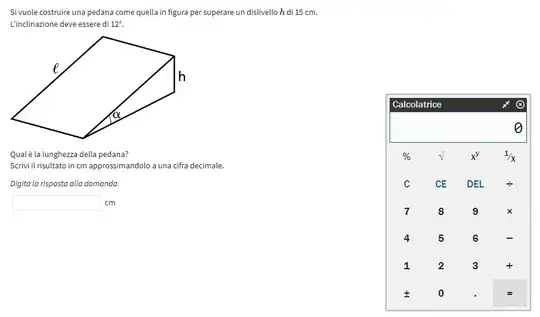I would like to find the
$$\color{red}{\huge\sin 12°}$$ without a scientific calculator and Maclaurin formula because my students of an high school don't know this approach. I have thought starting from $\sin 18°=(\sqrt 5-1)/4$ and the cosine $\cos 18°=(\sqrt{10}+2\sqrt 5)/4$ (from the geometry we know that the side of the regular decagon is the golden section of the radius).
Being $\sin (2\alpha)=2\sin(\alpha)\cos(\alpha)$ I know $\sin 36°$, but for the $\sin 12°$ I have thought $$\cos3α=\cos(2α+α)=\cos2α\cosα−\sin2α\sinα=$$$$\cosα⋅(2\cos2α−1)−2\sin2α\cosα$$
$$=2\cos3α−\cosα−2\cosα(1−\cos2α)=$$$$2\cos3α−\cosα−2\cosα+2\cos3α=4\cos3α−3\cosα$$ Considering the formulas of trisection of an angle I have: $$\boxed{\cosα=\frac 43\cos3α −3\cos \frac\alpha3}$$ We could put $\cos(α/3)=z$ and thus I will have the equation
$$4z^3-3z-\cosα=0$$
It is then a matter of solving that third degree equation, of which there is a solution method (which reminds me of the famous querelle between Tartaglia and Cardano...).
My problem it is this:
You want to build a platform like the one in the figure to overcome a height difference $h$ of 15 cm. The inclination must be 12°. What is the length $\ell$ of the platform? (the link is https://invalsi.zanichelli.it/taoDelivery/DeliveryServer/runDeliveryExecution?deliveryExecution=kve_de_https%3A%2F%2Finvalsi.zanichelli.it%2Ffirst.rdf%23i164517281905829660045946)
My students have not a scientific calculator during the test.
How can I solve the problem simply?

